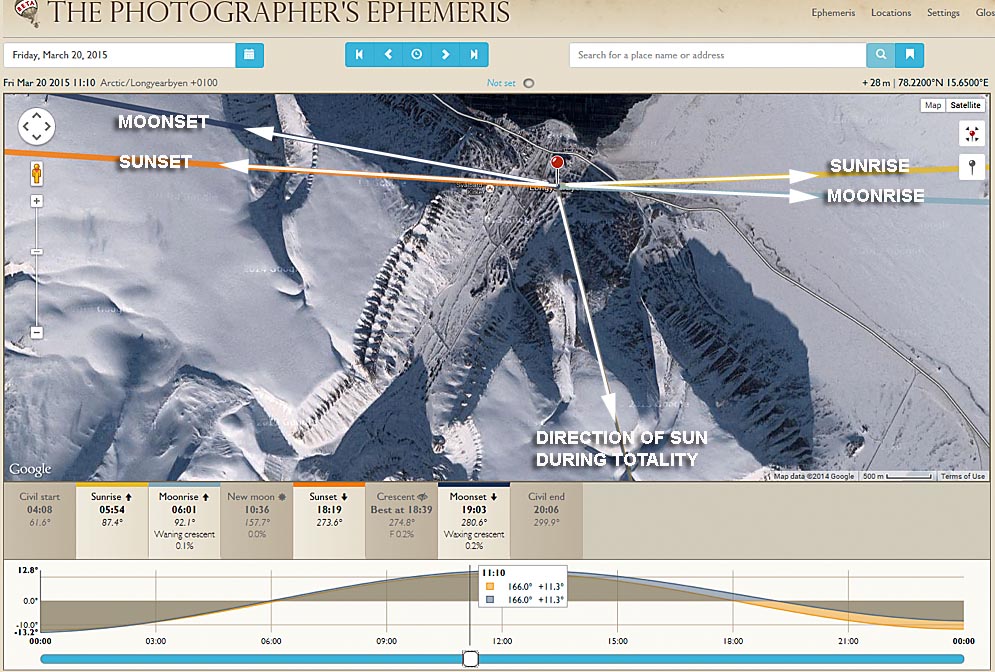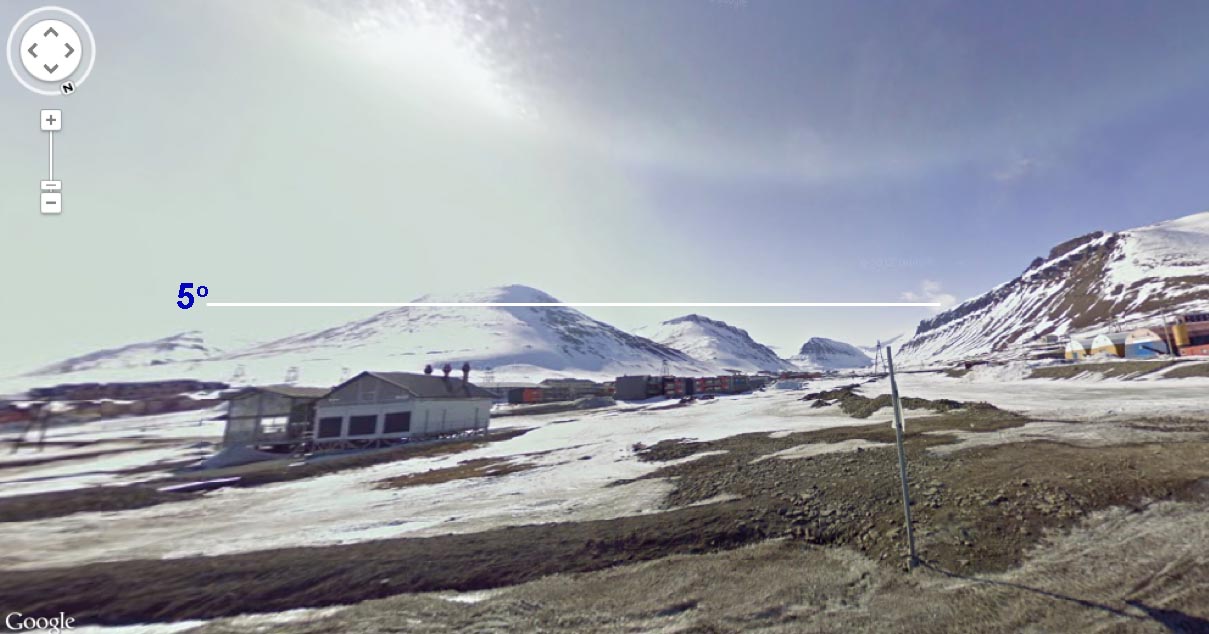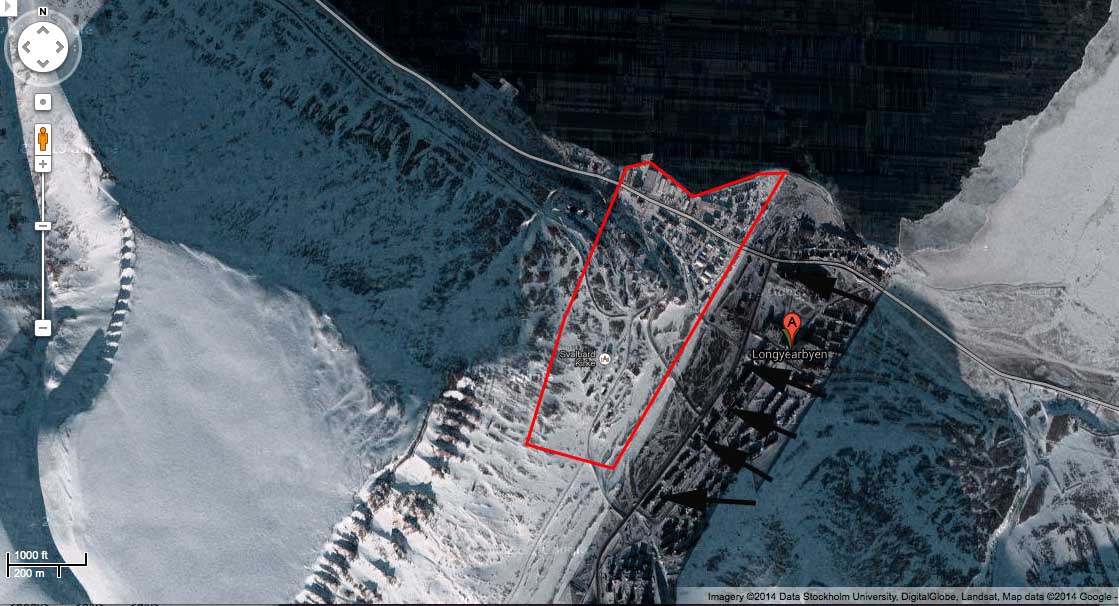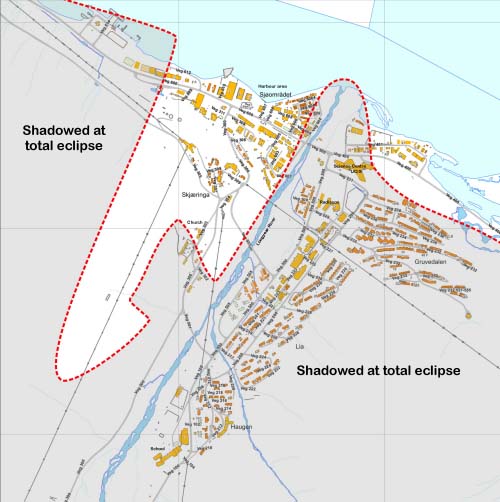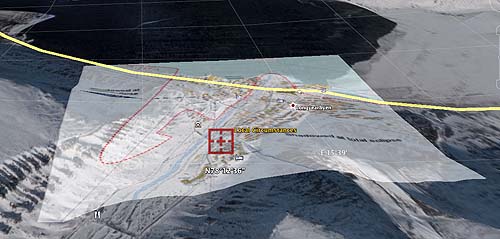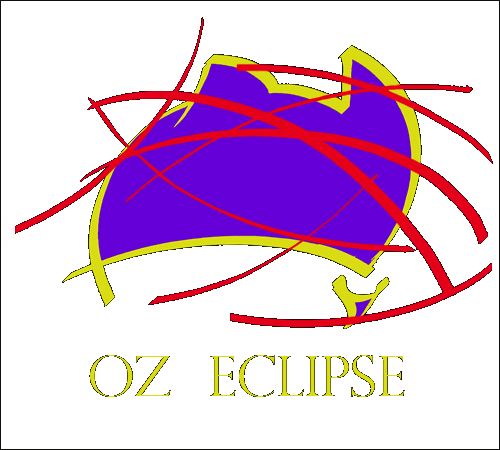
 |
WAITING FOR THE
SHADOW
SOLAR AND LUNAR ECLIPSE OBSERVINGHOME PAGE |
|
|
| Introduction | Sun/ Moon Rise/ Set |
Sun Altitude Eclipse Day |
Orientation- corona Sun's axis EQ mount alignment |
Sky at totality | Photographic Information | Power & Batteries | Further reading |
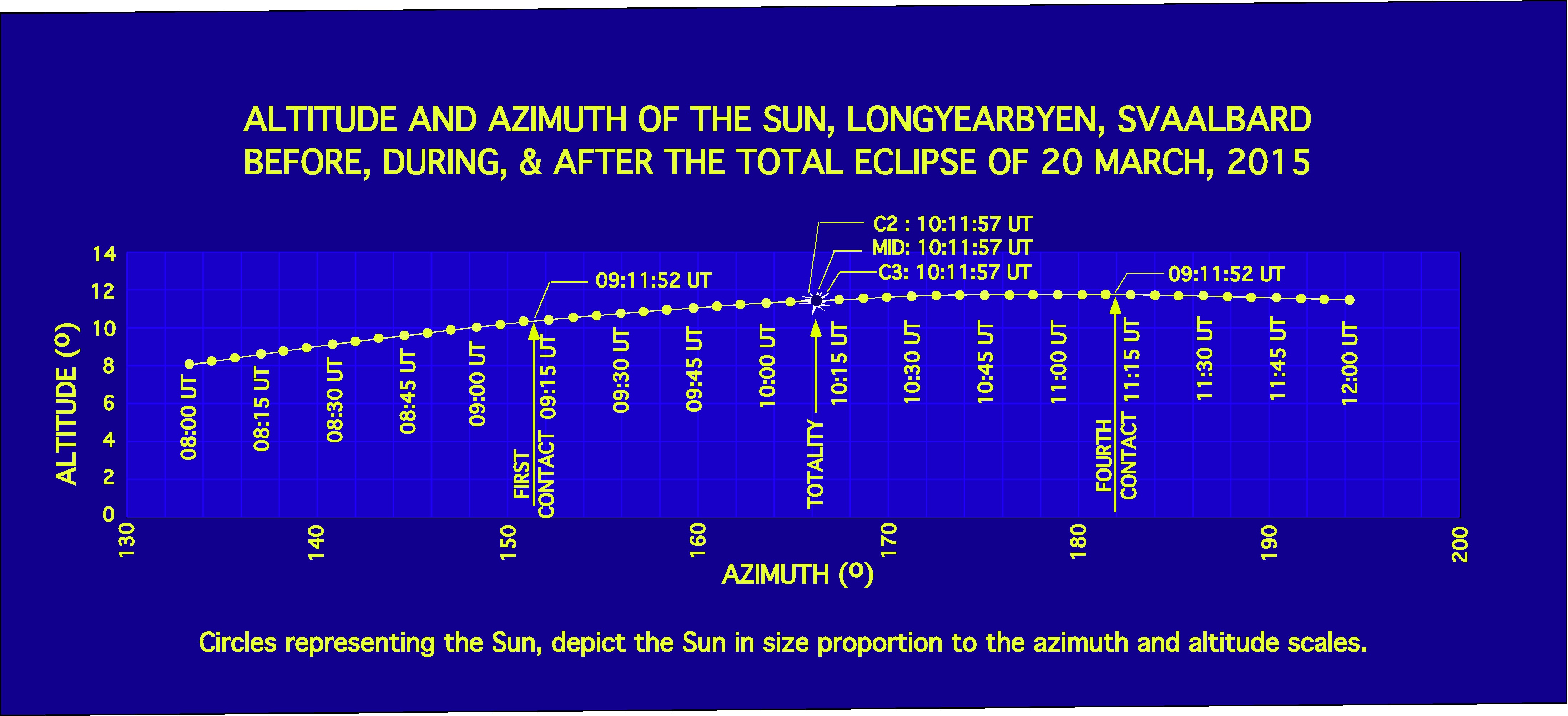
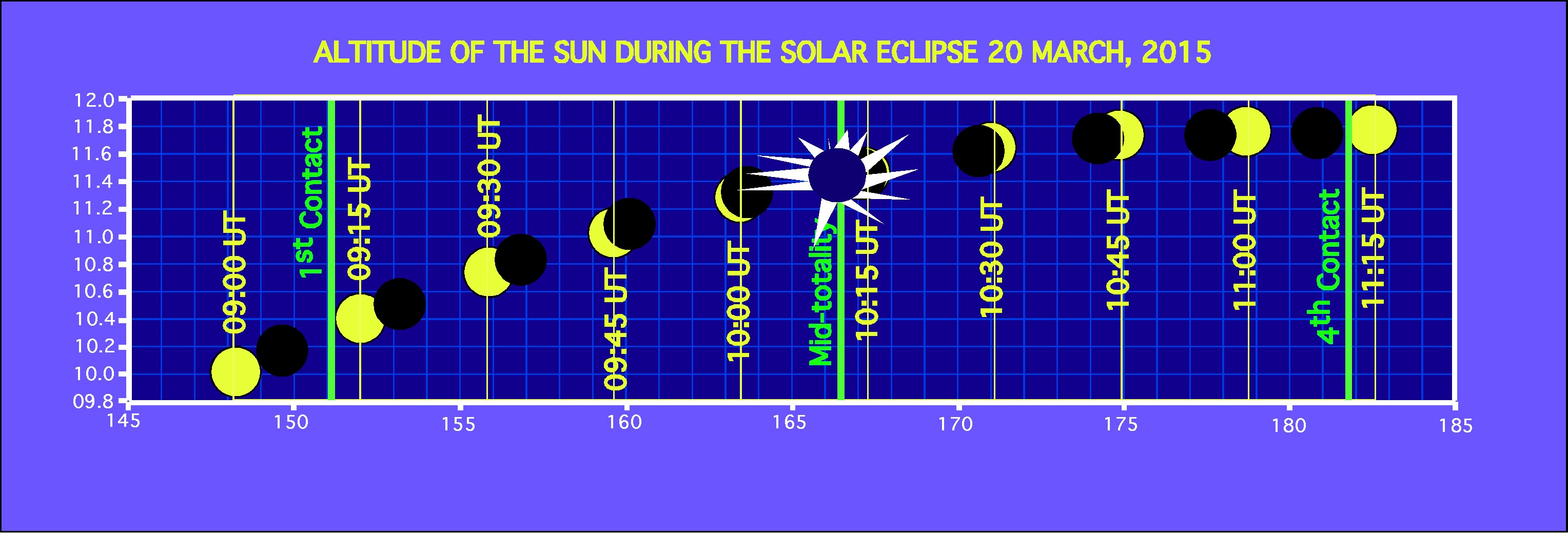
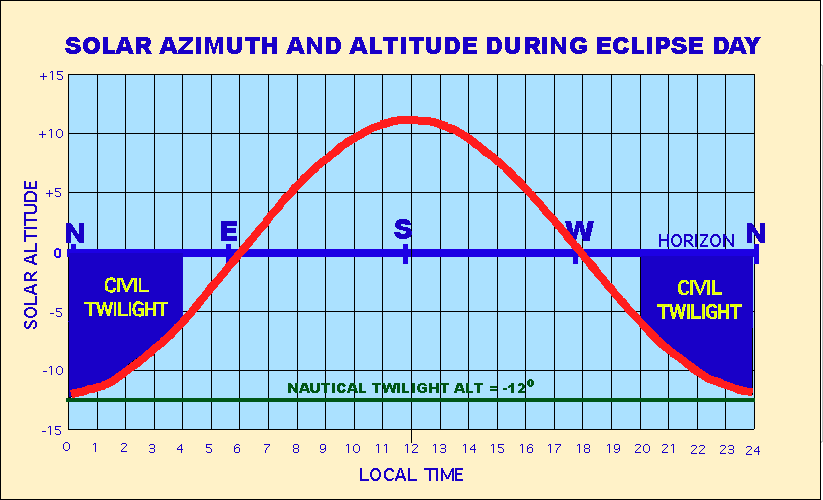
|
ALTITUDE, AZIMUTH, RA, DEC OF THE SUN EVERY HOUR DURING ECLIPSE DAY (Source: Starry Night Pro)
|
Local
DATE LOCAL Time AM/PM AZI
ALT RA
RA DEC DEC
DD/MM/YYYY HH:MM:SS HRS MIN DEG MIN 21/03/15 01:01:55 AM 14.4 -11.4 00h 0.216m +0° 01.259' 21/03/15 02:01:55 AM 29.6 -10.2 00h 0.368m +0° 02.247' 21/03/15 03:01:55 AM 44.7 -8.4 00h 0.521m +0° 03.235' 21/03/15 04:01:55 AM 59.7 -5.9 00h 0.673m +0° 04.224' 21/03/15 05:01:55 AM 74.4 -3.1 00h 0.825m +0° 05.212' 21/03/15 06:01:55 AM 89.1 -0.1 00h 0.977m +0° 06.200' 21/03/15 07:01:55 AM 103.8 +03.0 00h 1.129m +0° 07.188' 21/03/15 08:01:55 AM 118.6 +05.8 00h 1.281m +0° 08.176' 21/03/15 09:01:55 AM 133.5 +08.3 00h 1.433m +0° 09.164' 21/03/15 10:01:55 AM 148.6 +10.3 00h 1.584m +0° 10.152' 21/03/15 11:01:55 AM 163.8 +11.5 00h 1.736m +0° 11.140' 21/03/15 12:01:55 PM 179.1 +12.0 00h 1.887m +0° 12.128' 20/03/15 01:01:55 PM 194.4 +11.3 23h 58.391m -0° 10.600' 20/03/15 02:01:55 PM 209.6 +10.1 23h 58.542m -0° 09.612' 20/03/15 03:01:55 PM 224.7 +08.3 23h 58.694m -0° 08.624' 20/03/15 04:01:55 PM 239.6 +05.9 23h 58.846m -0° 07.635' 20/03/15 05:01:55 PM 254.4 +03.1 23h 58.998m -0° 06.647' 20/03/15 06:01:55 PM 269.1 +00.1 23h 59.149m -0° 05.659' 20/03/15 07:01:55 PM 283.8 -02.9 23h 59.302m -0° 04.670' 20/03/15 08:01:55 PM 298.6 -05.8 23h 59.454m -0° 03.682' 20/03/15 09:01:55 PM 313.5 -08.2 23h 59.606m -0° 02.694' 20/03/15 10:01:55 PM 328.6 -10.1 23h 59.758m -0° 01.705' 20/03/15 11:01:55 PM 343.8 -11.3 23h 59.911m -0° 00.717' 21/03/15 12:01:55 AM 359.1 -11.8 00h 0.063m +0° 00.271' |
